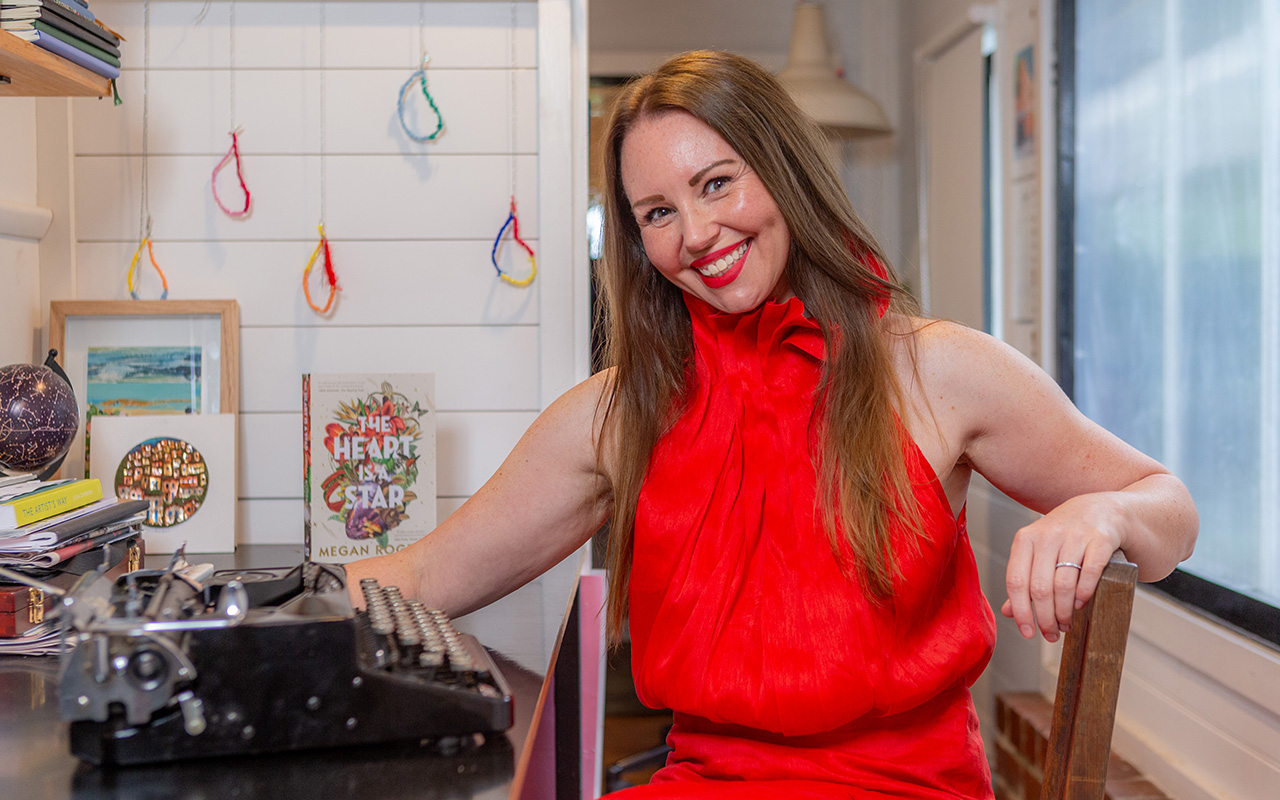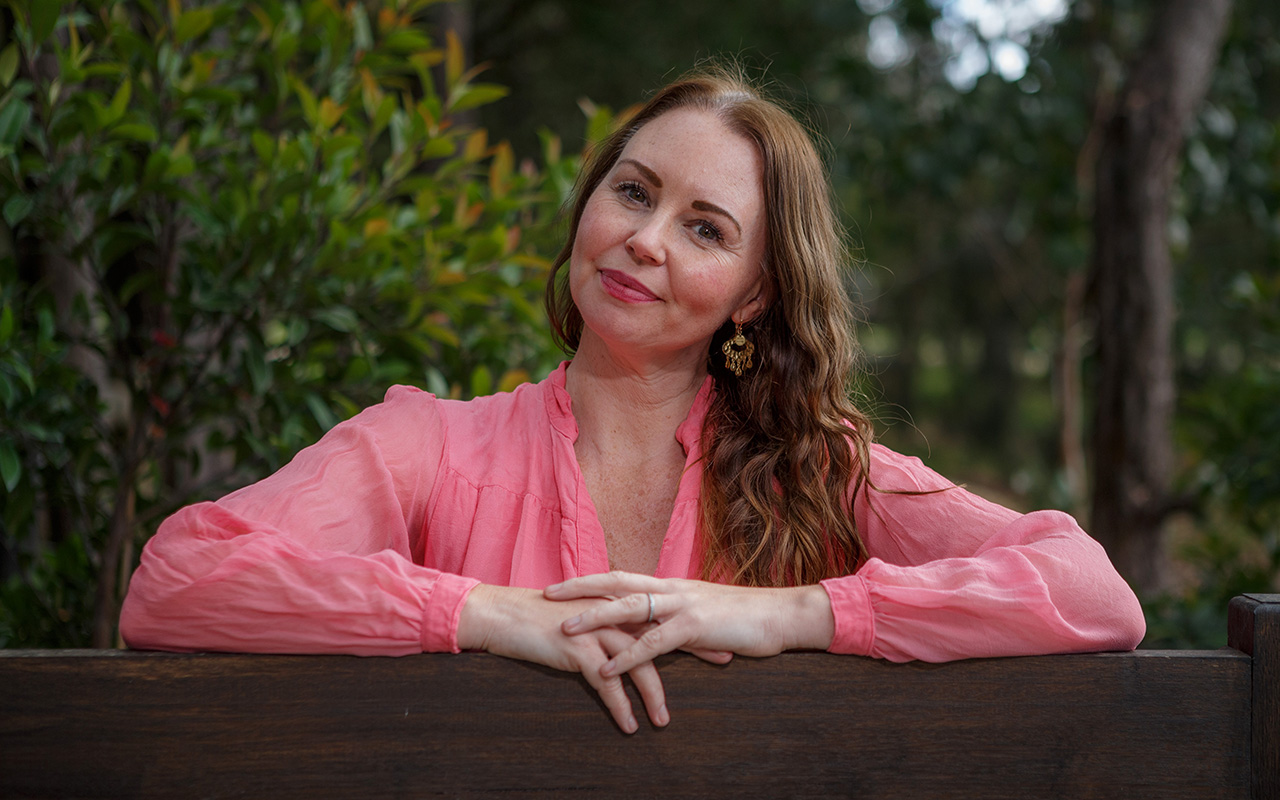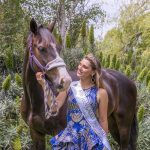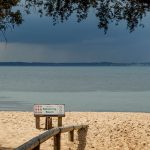
Perched atop a backyard boulder in the Dandenongs overlooking the treescape, Merricks writer, Megan Rogers learned the art of storytelling from her Dad when she was four years old. They would sit for hours yarning. He’d tell her about the journey of a raindrop and she’d soak it all in. Then she’d scribble her stories into the pages of her mother’s 1970s gardening books, their hard covers harbouring the budding writer.
“Writing was the way I made sense of the world,” she says. Once she could physically write, it was an everyday practice. Early on, she wrote poetry before moving into longer forms. In high school she was drawn to journalism. Megan also has an impressive writing ancestor: Matthew Prior (1664-1721), English Diplomat and Poet Laureate, entombed in Poets’ Corner at Westminster Abbey, no less.
In her youth, Megan read widely from newspapers through to classic literature. She still loves reading when she gets the chance. Poetry is her go to. “Poetry is a whole world in a single page. When you’re a working Mum who is also trying to write books, you don’t get a lot of time to read. I had to be very disciplined and focused to write and cover Mathematics, Astrophysics, Literary Studies and Contemporary Dance which were the focus of my Bachelor of Arts/Science at Monash University. The Literary Studies component covered the gambit from poetry to contemporary fiction.” Megan followed this up with a Professional Writing and Editing Diploma (RMIT). She also completed a Masters of Marketing (Monash).
“Madness was the only sane response to an insane world for women. A woman’s journey only ever ended in marriage, madness or death,”
Her first book, ‘Finding the Plot’ (Demeter Press), was an academic text in which she ‘released’ the madwoman in women’s literature. “Madness was the only sane response to an insane world for women. A woman’s journey only ever ended in marriage, madness or death,” she says. For her PhD in Creative Writing (RMIT), she mapped these madwoman stories to debunk that trope and conceive of a feminism in which women could be happy.
Megan began her career as an editorial assistant at Allen & Unwin. Then she was Marketing Director at the State Library of Victoria for many years. She left that to write her debut novel: ‘The Heart is a Star’. It took three years to craft. Released in 2023 to critical acclaim, it debuted at number four in Australia and was the 5th best-selling debut novel in 2024. It’s since been optioned for film adaptation by award-winning Aquarius Films.
Three things inspired this book. A male undergraduate lecturer’s class on writing ‘likable women’ infuriated Megan who then committed herself to writing women beyond cliché. When Megan’s daughter was in hospital, she met an empathetic paediatric anaesthesiologist whose ethos was ‘never look away from the human experience’. It struck a chord. Megan also wanted to honour the generations of real women’s stories she’d heard throughout her life.
In ‘The Heart is a Star’, protagonist, Layla, is messy and imperfect. Megan felt this is the reality for most women despite the constant, galling emphasis on female perfection. She wrote in first person to witness Layla’s inner thoughts and in present tense so the reader could experience her life in real time. Megan was inspired by Ernest Hemingway who said, “Write hard and clear about what hurts.”
When her literary agency, Zeitgeist, sent Megan’s novel out, all six publishers came back with an offer. Megan chose HarperCollins because she wanted to work with publisher, Catherine Milne, who really ‘got’ the book. Megan trusted Milne’s structural edit. The whole process was comfortable. HarperCollins have signed her for a subsequent two-book deal.
As for process, plotting comprises 70% of Megan’s novel planning; the rest evolves organically. Mapping out a novel from beginning to end is important to see the whole scope of the story. It’s also more time efficient. Generally, Megan sets a goal of 500 words a day several times a week, but with a day job, (teaching), mentoring and parenting, it can be hard to find time.

A lot of the work is done in her head before it reaches the page. “Characters become my friends because I spend so much time thinking about them,” she says. Her characters are not based on her own life because she feels she wouldn’t see them clearly then.
“There are certain things a reader likes to see in a story, such as a change in the character. There also needs to be conflict. Writers have ‘craft dials’, as I like to say, for story elements like character, plot and setting. We have to dial those decisions up and down as needed,” she says.
Megan advises new writers, “Trust yourself. Know what advice to take and what to leave. Be humble enough to know when something isn’t working. Writing well is about faith and humility and knowing when each is required. The answer is never in the general. It’s always in the specific. Also, see writing as a job. Work hard. You have to really want it,” she says.
Her next novel, ‘The Anatomy of Tears’ is scheduled for release in 2025. She’s working hard at it. It’s very different to the first novel, but she imagines it will attract a similar audience. Soon, Megan will be championing local writers at the upcoming Western Port Writes Literary Festival to be held on September 6-8.
meganrogerswriter.com
westernportwrites.com.au





